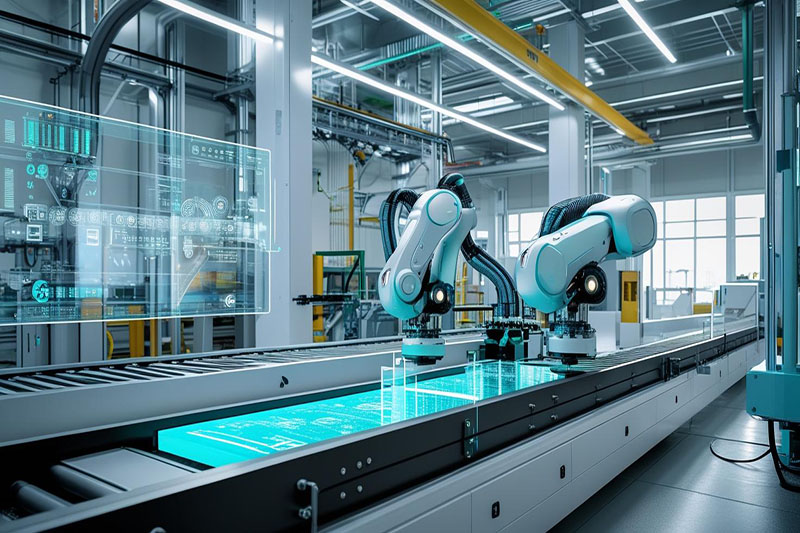June 27, 2025

Digital transformation in manufacturing can synthesize and streamline production processes to such a degree that productivity, efficiency, quality, and profitability (along with every other meaningful metric) hit unprecedented highs and keep climbing.
That promise has driven many factories to adopt new technologies rapidly and enthusiastically. However, as many are discovering, more technology does not automatically result in digital transformation flourishing. In fact, technology can be the biggest obstacle to leveraging things like data-driven analytics, artificial intelligence, and cloud computing.
One study showed that 98% of manufacturers are struggling with data and data-driven initiatives, making it harder to adopt technologies like AI that depend on that data. Technology was also the source of collaboration and productivity struggles at 97% of companies surveyed.
Why are manufacturing tech stacks creating as many (or more) problems as they solve? Knowing the answer could not be more important as manufacturing moves further into a future where technology drives everything—for better or for worse.
What Causes a Messy tech stack?
Two common tech stack issues cause countless hours of confusion, frustration, and downtime in manufacturing.
The first issue is a large tech stack, implying the use of many point solutions installed to fix a specific problem or introduce a narrow capability. The larger the tech stack, the harder it is to manage, secure, and optimize, making each solution less effective and limiting the overall impact of manufacturing technology. Despite requiring more time and money, over-extended tech stacks often inhibit digital transformation because there are too many parts to create a cohesive whole.
The second—but closely related—cause of messy tech stacks is software that has weak or non-existent integration with each other. Functioning less like a stack of interconnected elements and more like a scattering of software, these environments create disconnected data sources where someone has to manually integrate and organize the data. The inevitable result is errors, omissions, delays, and distractions, all of which get worse as the tech stack grows.
Symptoms of a Messy Tech Stack
Sometimes it’s obvious when a tech stack needs to be rebuilt. Other times the problems are less apparent. Look for these symptoms:
- Data Silos: Making decisions takes longer and raises more questions when data is trapped in silos and can’t move efficiently to decision-makers.
- Manual Workflows: Processes that require people to move data manually are vulnerable to human error and are difficult to scale.
- DIY Workarounds: Quick fixes can temporarily resolve tech stack issues but create security and technical issues over time.
- Outages and Inefficiencies: Frequent tech issues are a clear sign that tech stacks aren’t working effectively to become resilient.
- Inflated Costs: Redundant, under-powered, or poorly integrated tech solutions lead to higher IT costs that climb faster than expected.
- Difficult Additions: Implementing new technologies is more difficult and disruptive when tech stacks depend on a complicated architecture that’s already difficult to maintain.
The simplest measure of messiness in a tech stack is to compare inputs versus outputs. Does the amount of time, energy, and ingenuity it takes to operate technology exceed the amount of efficiency, insight, and value it creates?
If so, the imbalance will only get worse without a drastically different approach to the tech stack.
How to fix the manufacturing tech stack
In our experience, the best solution—fastest, easiest, cheapest, strongest—to a messy tech stack is implementing a manufacturing-specific ERP like CloudSuite Industrial. Any ERP will help to integrate data and workflows, but having a solution made for manufacturing is key.
For one, manufacturing-specific ERP will offer more of the features and functions that manufacturers need native to one platform, thereby shrinking the tech stack as much as possible and eliminating the expensive costs and technical complexities of multiple point solutions. It will also be integrated more robustly with other common types of manufacturing technology to prevent the formation of data silos even as new solutions come online.
The solution comes down to emphasizing quality over quantity. If all the symptoms above arise from large, loosely connected tech stacks, they can all be solved by condensing the number of solutions and data sources. That said, putting more responsibilities onto a smaller tech stack makes it imperative to select the right products and vendors.
Messy tech stacks are a more common and more consequential problem than most realize. Fortunately, the solution is simpler than most realize, too. The right ERP can immediately solve years of accumulated technical hurdles and catalyze the true potential of digital transformation.
Guide Technologies: An End-to-End Partner
Don’t make changes to the tech stack without a partner to help you plan, prepare, and proceed. The manufacturing technology experts at Guide Technologies are here to support you from end to end—contact us to discuss your situation.
